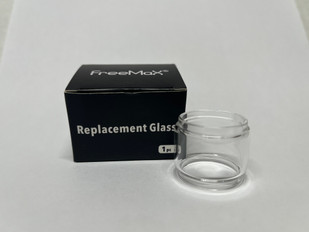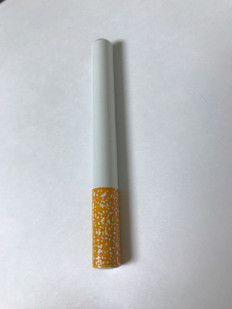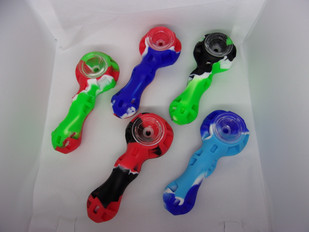- Home
- The Vape Mall Blog
- The Anatomy of Vape Tanks and How to Choose the Right Option
The Anatomy of Vape Tanks and How to Choose the Right Option
Posted by on

Vape tanks play a pivotal role in shaping the vaping experience, from determining vapor production to influencing flavor intensity. Understanding the anatomy of vape tanks and how to choose the right option based on your preferences and vaping style can drastically enhance your experience. Whether you're a novice or a seasoned vaper, selecting the right tank involves a deep understanding of various factors, from coil compatibility to airflow and e-liquid capacity.
Anatomy of a Vape Tank
To make an informed decision, it helps to break down the essential components of a vape tank. Though they come in various styles, most vape tanks share the following parts:
1. The Drip Tip
The drip tip, also known as the mouthpiece, is the component through which you inhale the vapor. It’s usually detachable and comes in different sizes and materials, such as plastic, resin, and metal. Wider drip tips, such as 810-size tips, allow for more airflow, making them ideal for direct-to-lung (DTL) vaping. On the other hand, narrower 510-size drip tips are more suited to mouth-to-lung (MTL) vaping, as they provide a more restricted airflow for a cigarette-like draw.
2. The Tank (E-Liquid Reservoir)
The tank itself holds the e-liquid. Most modern vape tanks are made of glass (usually Pyrex) or reinforced plastic to ensure durability and resist the effects of strong e-liquids. The size of the tank can range from as little as 2 mL to as much as 8 mL or more. Larger tanks require fewer refills but may make the vape device bulkier, while smaller tanks are more compact but require more frequent refilling.
3. The Coil
The coil is the heating element inside the tank that vaporizes the e-liquid. Coils come in different resistance levels, typically categorized into two types: sub-ohm coils (below 1 ohm) and above-ohm coils (above 1 ohm). Sub-ohm coils are ideal for cloud chasers, as they provide more vapor and heat at lower resistances. Above-ohm coils, on the other hand, are better for flavor-focused vapers who prefer a more subtle and cooler vape.
Coils are usually made from materials like kanthal, stainless steel, nickel, or titanium, each offering different heat properties and compatibility with temperature control mods. Coils are also available in different configurations, such as single-coil, dual-coil, or mesh coil setups, each with its own advantages. Mesh coils, for instance, provide quicker heating and better surface area contact with the wick, leading to faster vapor production and richer flavor.
4. The Base and Airflow Control Ring
At the bottom of most vape tanks is the base, which connects the tank to the vape mod and houses the coil. Attached to the base is the airflow control ring, a crucial part that allows you to adjust the amount of air that passes through the tank when you inhale. Adjusting the airflow can either tighten or loosen the draw, which influences vapor production and flavor intensity. A tighter airflow tends to concentrate flavor but limits cloud production, while a looser airflow produces more vapor but may dilute flavor.
5. Wicking Material
The wicking material is essential for drawing e-liquid to the coil, where it gets vaporized. The most common wicking material is organic cotton, known for its clean, neutral flavor and excellent absorption properties. Some advanced tanks may use alternative materials like ceramic or silica, each offering unique properties like better heat resistance or a smoother flavor.
Types of Vape Tanks
Different types of vape tanks are designed to suit various vaping styles. Here’s a look at the most popular types:
1. Sub-Ohm Tanks
Sub-ohm tanks are built for direct-to-lung vaping and produce larger clouds and intense flavor due to their lower-resistance coils (below 1 ohm). These tanks require more wattage and are best suited for experienced vapers who enjoy chasing clouds. Sub-ohm tanks also tend to have larger airflow slots, providing a looser draw and more vapor.
2. Mouth-to-Lung (MTL) Tanks
MTL tanks are designed for those who prefer a vaping experience similar to smoking a cigarette, where vapor is first drawn into the mouth before being inhaled into the lungs. MTL tanks use above-ohm coils, provide a tighter airflow, and tend to focus more on flavor than vapor production. These are ideal for beginners and those who enjoy nicotine salts or higher nicotine e-liquids.
3. Rebuildable Tank Atomizers (RTAs)
RTAs allow users to build their own coils, offering a high degree of customization for vapers who want to control their vape experience. These tanks have a deck for installing coils and a tank section for holding e-liquid. RTAs are more advanced than pre-built coil tanks and require a bit of knowledge about coil building and maintenance, but they offer the flexibility to customize resistance, wicking, and airflow.
4. Rebuildable Dripping Atomizers (RDAs)
Unlike RTAs, RDAs don’t have a tank to hold e-liquid. Instead, users manually drip e-liquid onto the exposed coils and wick. RDAs are typically used by advanced vapers who prioritize flavor and vapor production. Because they require constant dripping, they are less convenient for on-the-go vaping but are highly customizable.
How to Choose the Right Vape Tank
Choosing the right vape tank can enhance your vaping experience, but it requires consideration of several factors:
1. Vaping Style
Your vaping style is the most important factor when choosing a vape tank. If you prefer big clouds and a more open airflow, a sub-ohm tank or an RDA might be the best choice. On the other hand, if you enjoy a more restricted, cigarette-like draw, an MTL tank will likely suit your needs better.
2. Coil Compatibility
Different tanks are compatible with different types of coils, each affecting the resistance, wattage range, and vapor output. Make sure your tank is compatible with coils that suit your vaping style, whether that’s high-resistance coils for a smoother vape or sub-ohm coils for more intense vapor.
3. Tank Capacity
Consider how often you want to refill your tank. Larger tanks offer more convenience but can make your device bulkier. If you prefer portability and don’t mind refilling frequently, a smaller tank might be a better option.
4. Airflow
Some vapers prefer a tighter draw for more flavor, while others enjoy an airy draw for larger clouds. Look for tanks with adjustable airflow, so you can fine-tune the draw to your liking.
5. Ease of Use
For beginners, it’s essential to choose a tank that’s easy to fill, clean, and maintain. Pre-built coil tanks with top-fill designs and easy coil replacement systems are ideal for those new to vaping, while more advanced users might prefer rebuildable options like RTAs or RDAs for greater customization.
The vape tank is a crucial part of your vaping setup, and selecting the right one can significantly impact your experience. Understanding the anatomy of a vape tank, from the drip tip to the coil, and knowing how different types of tanks cater to specific vaping styles, will help you make an informed choice. Whether you're chasing clouds, savoring flavors, or looking for a portable setup, the right tank can make all the difference.
 Loading... Please wait...
Loading... Please wait...



















